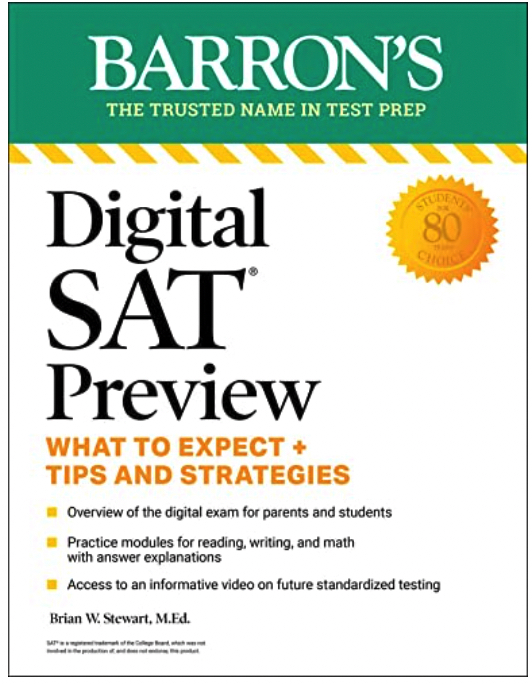Brian appeared on CBS Miami last week to discuss what parents should know about the new Digital SAT test. Check out the interview here!
New Free Digital SAT E-book
I am very excited to share our new Digital SAT e-book! It has a full-length practice test and test-taking tips. The e-book is available to download to your kindle on Amazon.

Digital SAT Update
The College Board just released the test specifications for the new digital SAT. Here is the most important information about what is changing on both the SAT and PSAT as they switch to digital formats in 2023 and 2024. The most important change is that the SAT and PSAT will now be adaptive–the difficulty of the later sections will change based on the performance on the first sections.
Reading and Writing
- The Reading and Writing sections will be combined–students will see both Reading and Writing questions on the same test section.
- Each question will be on a single passage that ranges from 25-150 words.
- There will be new genres of passages presented, along with the continuation of fiction, historical documents, science, and social science. Students will now have some poetry and drama selections.
- There will be two Reading/Writing sections, each taking 32 minutes, each having 27 questions.
Math
- The topics covered in the math will remain virtually identical to what is covered on the current SAT and PSAT.
- There will still be multiple choice and student-produced response questions.
- The math test will be broken up into two sections of 35 minutes, each having 22 questions.
Takeaways
The SAT and PSAT are largely staying the same. Even the evidence-based questions on the reading, which I though might go away on the digital format, will remain. The grammar and math concepts will overlap with what is currently tested. The new digital SAT and PSAT should be less intimidating to students–the time constraints are quite generous, and students will need to stay focused for just over two hours to complete the exam.
I would encourage you to check out the sample questions available from College Board to get a taste of what is to come.
Please visit our blog for further updates on the new digital SAT and PSAT.
–Brian Stewart
New Concordance Tables for SAT and ACT Score Conversion
The College Board has just released updated concordance tables so that students can compare scores from the ACT to the SAT. Students can also use the tables to compare scores from the old SAT to the new SAT. Here is a link to the new tables:
https://collegereadiness.collegeboard.org/pdf/higher-ed-brief-sat-concordance.pdf
The college board has also created an app for smart phones that converts scores among these different tests.
Use these resources to compare your scores to determine whether the ACT or SAT is a better fit.
3 Things Students Can Do to Prepare for the New 2015 PSAT
What should students do to prepare for the new PSAT?
1. Read widely and deeply. Students should read texts from a variety of content areas, from world literature to natural science, to become familiar with the types of materials they will encounter. The PSAT reading will not be difficult for most students to finish, so they should focus on learning to read well rather than read quickly.
2. Learn grammar fundamentals. Many students have not had thorough training in grammar. The new PSAT will expect students to thoroughly understand proper punctuation, parallelism, subject-verb agreement, and a host of other topics. Since grammar is often not taught in depth at many schools, students may want to review independently.
3. Brush up on algebra and statistics. There is very little geometry and trigonometry on the new PSAT. If someone is trying to qualify for a National Merit Scholarship, they will want to study geometry so they can be prepared for the handful of questions that will arise. If someone has more moderate goals, they can emphasize algebraic and statistical fundamentals.